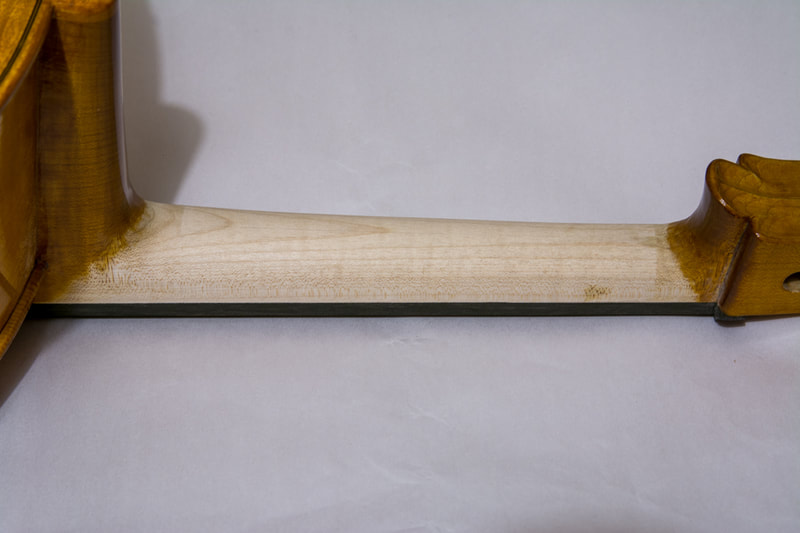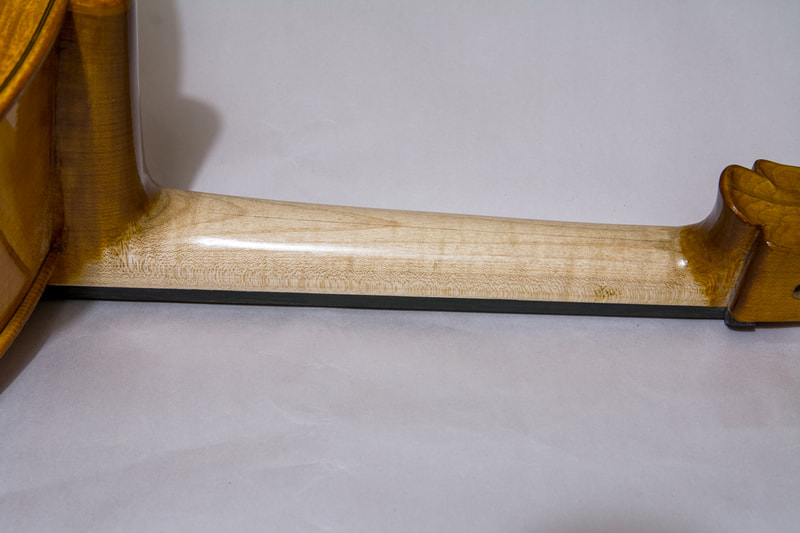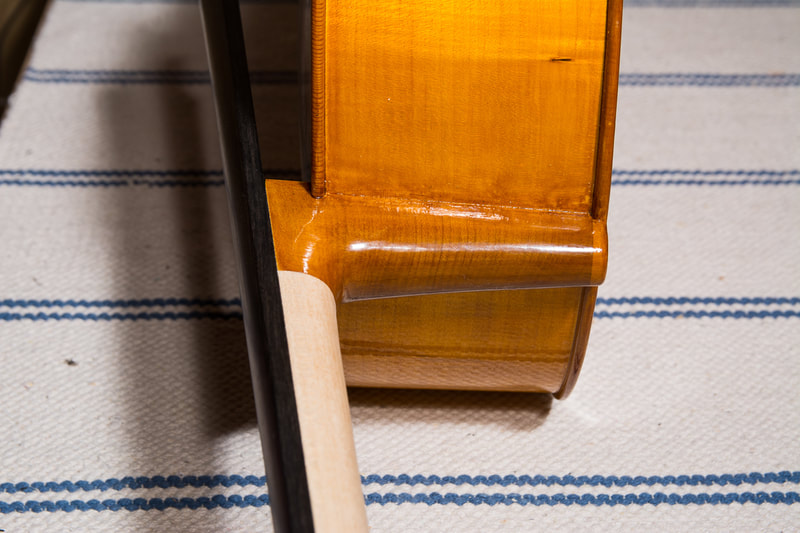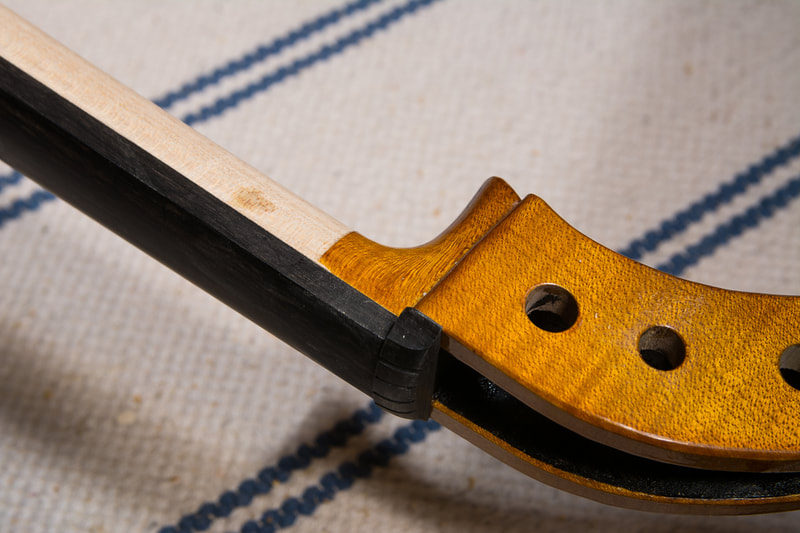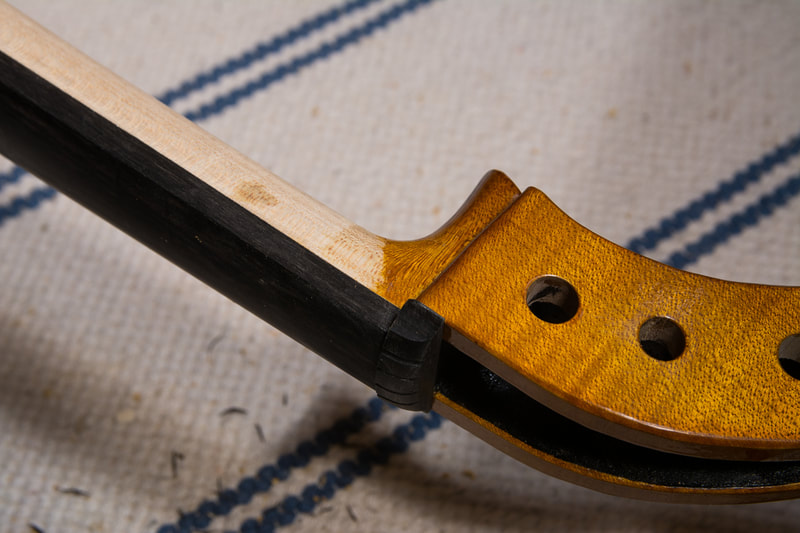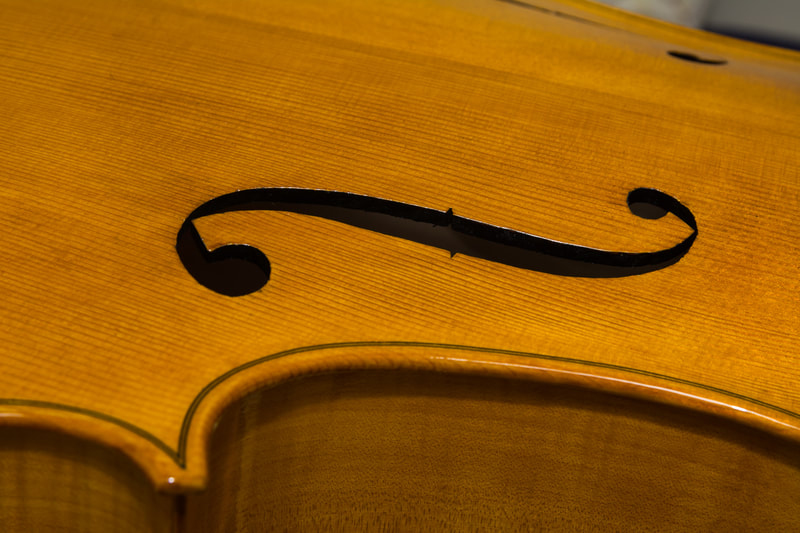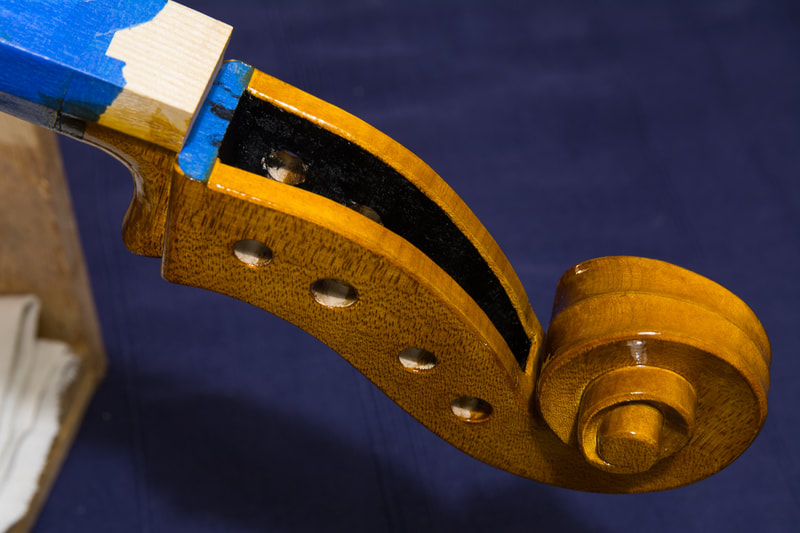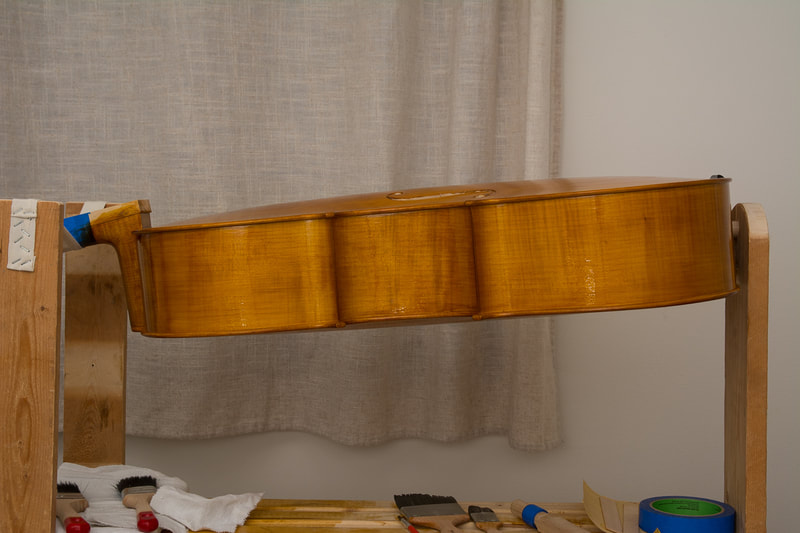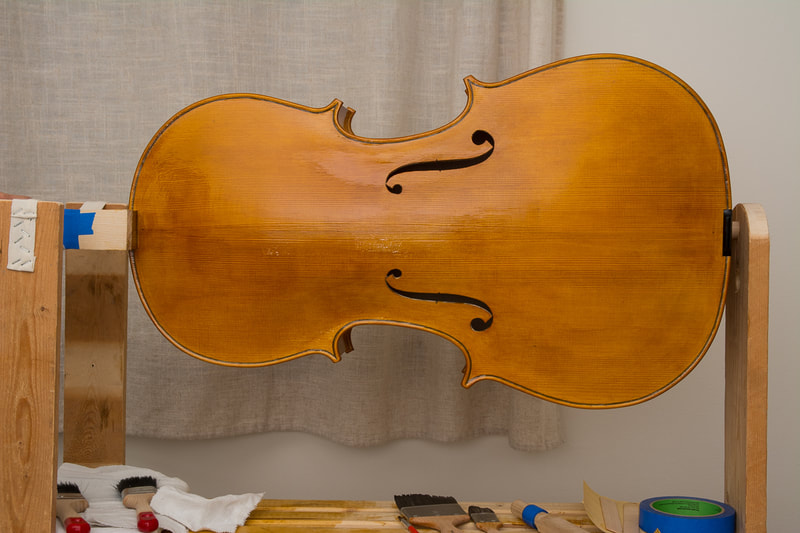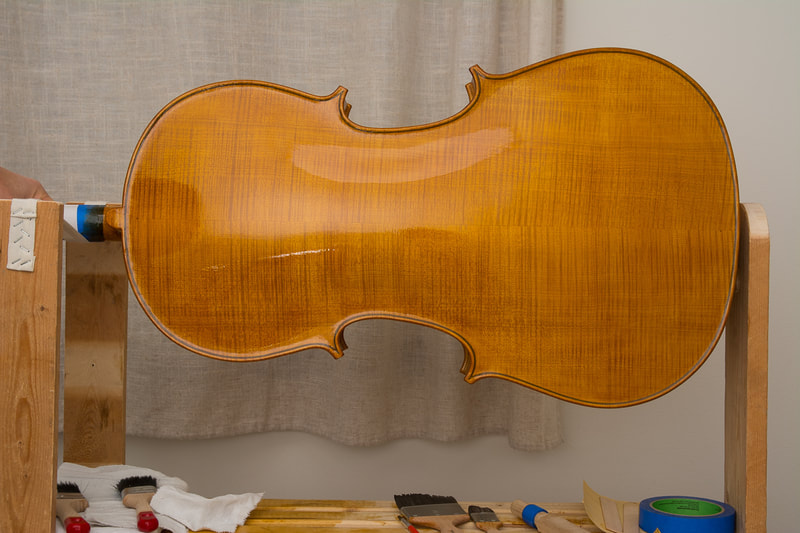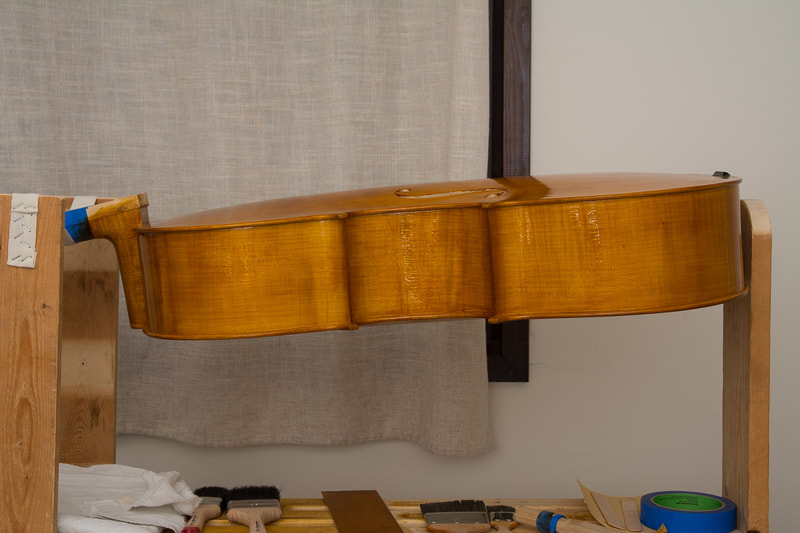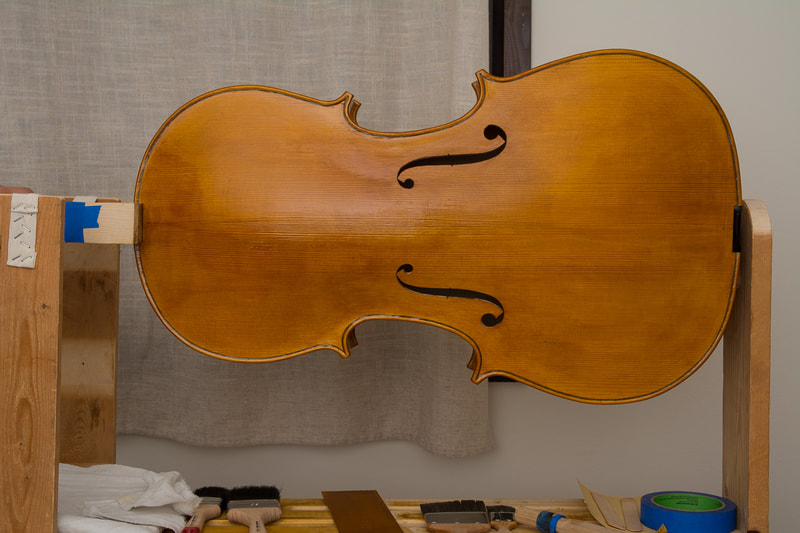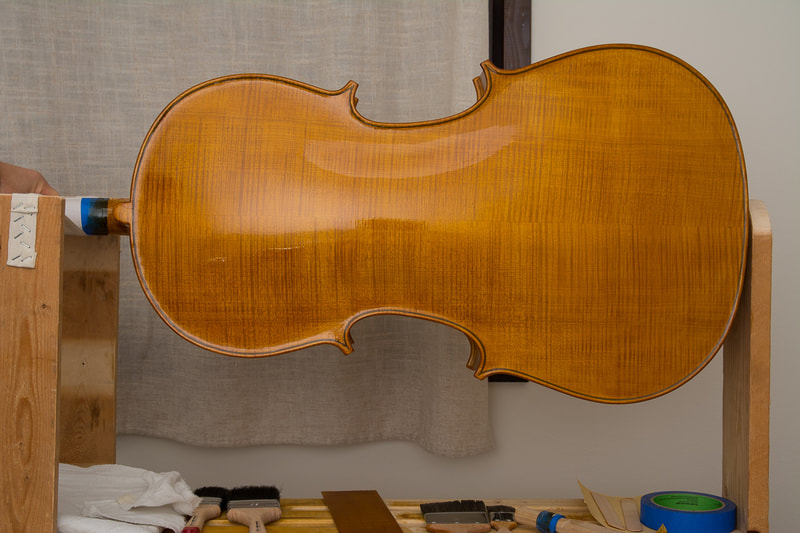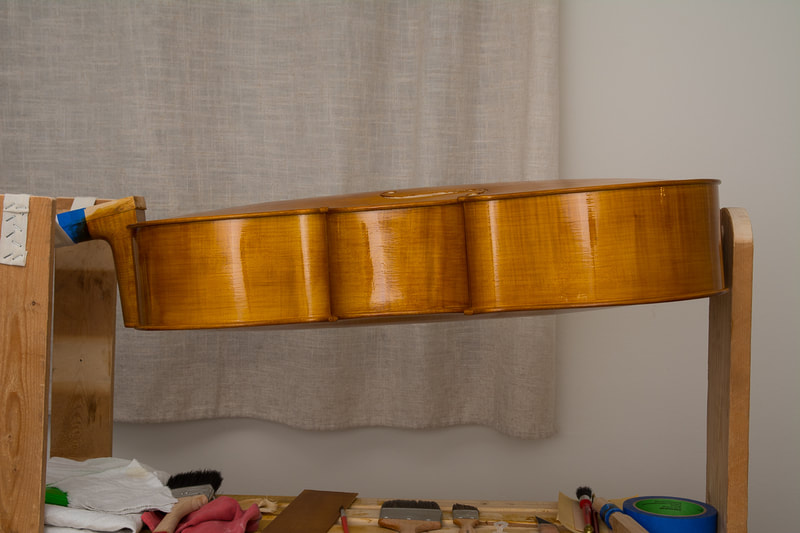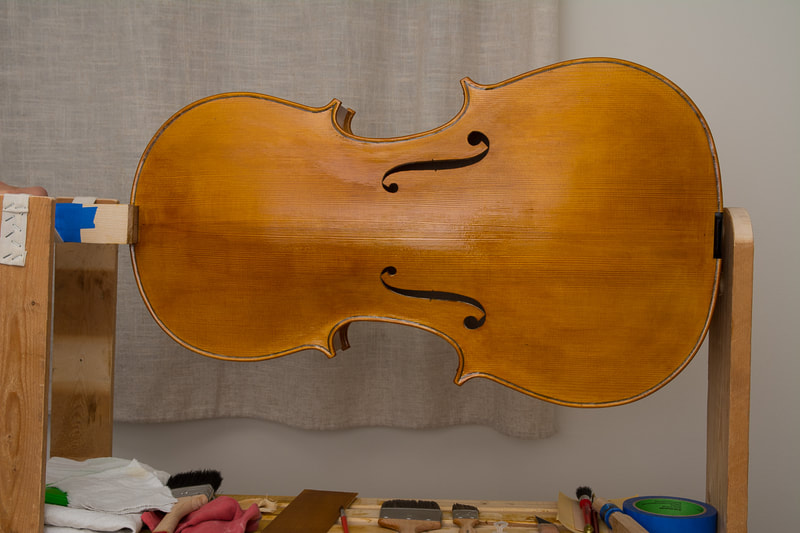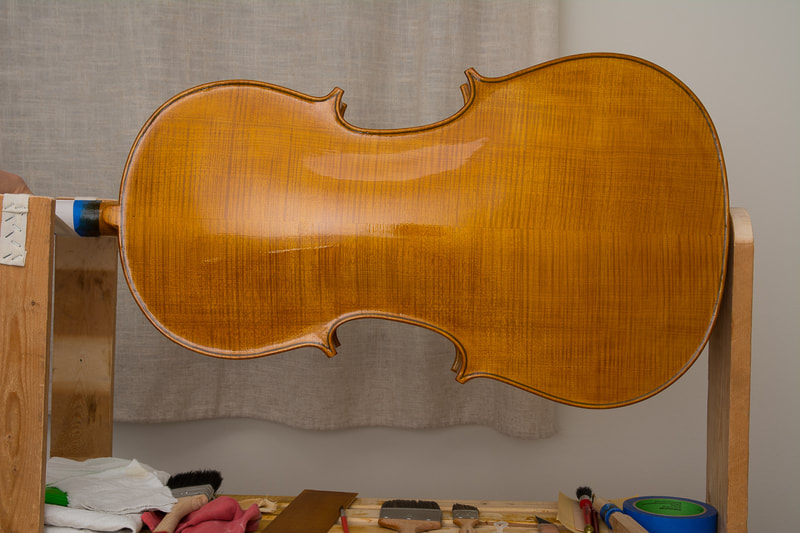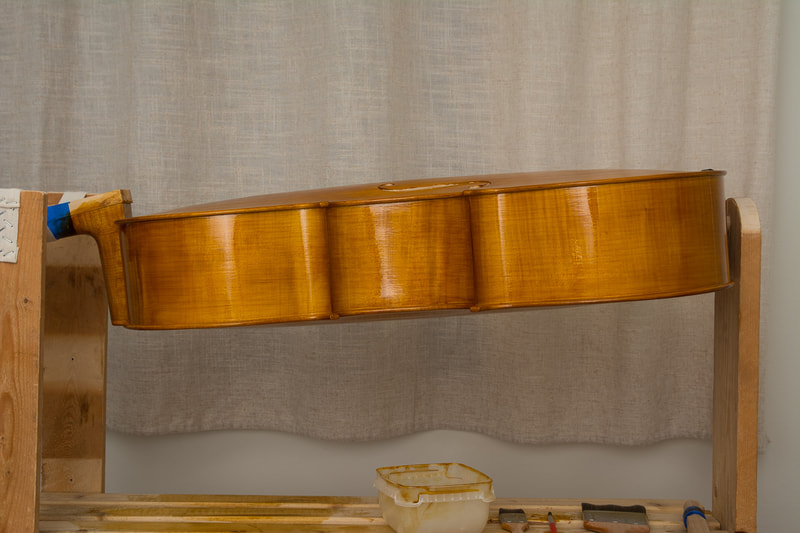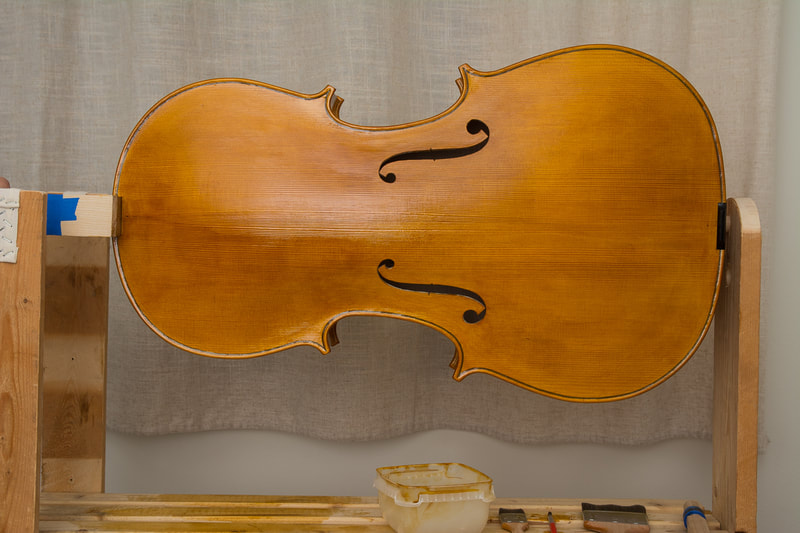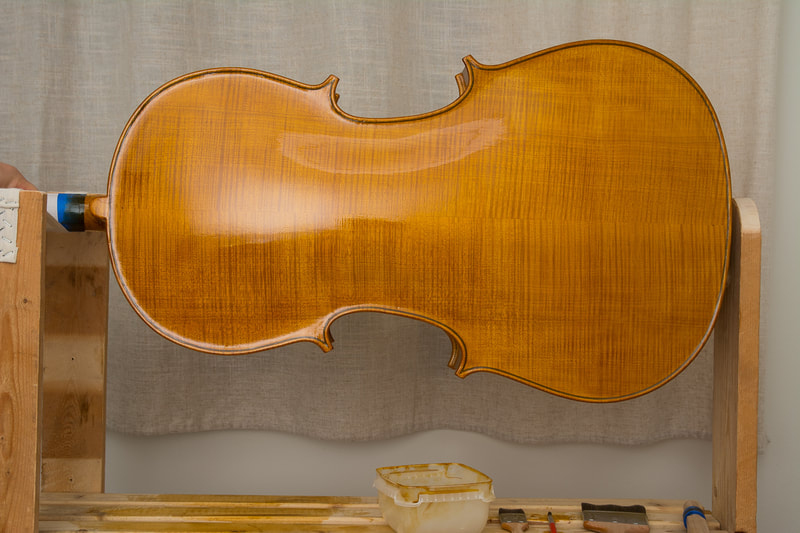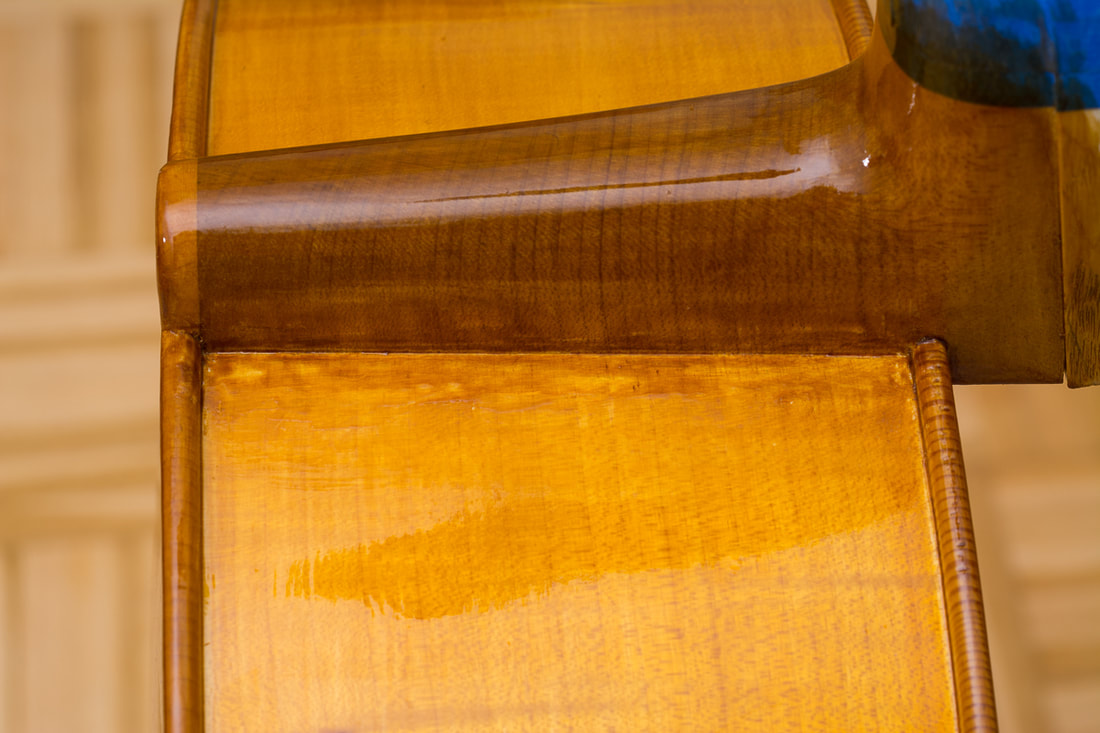|
After having created the blending, I varnished the neck with the provided "Giffpolitur farblos". I think it is just pure shellack in some alcohol. Before finishing the neck I was reading in some forums that one often leaves the neck untreated to leave it smoother and more slippery which makes it easier to play. Some say that a French polish or shellack may be used. Since the set Have includes this grip polish, I think it is exactly the French polish that some use. It's really quite clear. Maybe I should have stained the neck before hand as the colour wasn't quite even. Oh well, something to do differently in the next one.
0 Comments
The neck still needs a finish. I faded out the earlier varnishing first with a scraper and then with some sandpaper . It was surprisingly difficult to get a nice long smooth transition. So I stopped trying. The varnish for the neck also has a little colour so I hope that improve the blend. Maybe the spirit will also help there.
Two weeks has gone and the last coat of varnish has dried the minimum recommended time! So I can start polishing. The final polishing is also done with rottenstone but this time using oil instead of water. I went through the whole instrument every once in a while adding some oil and rottenstone to a linen cloth. The polishing somewhat reduces the glassy shine of the varnish to a nice sheen.
Next I should re-glue the fingerboard in place and work on the varnishing of the neck I need to fade out the varnish before applying the finish there. I painted the edges of the ff holes and the pegbox black. I think it looks really nice and gives a finished look to the instrument. While reading about this learned that doing this isn't as standard as I had thought. Some say that painting them black like this makes the instrument look cheap. One of these days I would like to have a really good look at some instruments by good luthiers. I haven't seen all that many cellos until now. I have now mostly used my sons current cello as an example but for the next one I would like to have a nicer cello to take inspiration from.
The surface looks good everywhere, my accidental touch left no trace. 10 layers of varnish will do! Now I should wait a couple of weeks to allow the varnish to harden before the final polishing can be done. That will be difficult.
This just might be the last layer! The instruction says to put at least 2-3 top coats. There are now three. I accidentally touched one spot after having varnished it. It could be the surface isn't quite as good there as elsewhere. On the other hand the surface will still be polished later. There are a total of 10 coats now. I suppose I will tomorrow check how good the surface now is and then decide how to continue.
After the last layer of varnish, the varnish should dry for 2-4 weeks before the final polishing with rottenstone and oil. So the cello may just get finished this year still! The end is close. The top coats are going on quite easy. I don't have very good lighting in the room where I varnish. I have plenty of it but somehow not well. It is sometimes difficult for me to see where I have already varnished and how thick the new layer of varnish is. This time I think I put it on a little too thickly near the left ff-hole. The front has some nice grain structure and now in one spot it is almost disappearing due to the too thick a layer of varnish. I don't dare try to fix it anymore. I need to figure out a better lighting for the next time.
I did the thumb check and since there was no fingerprint left anywhere I proceeded with the first layer of clear top coat. Nothing special here, I first went over the surface with rottenstone on a linen cloth, then cleaned that up, and put first a coat of varnish on the neck, then did the rest to avoid any issues in the corners. I am again confident in varnishing and that helps to get nice results. Once again, practice makes perfect (or at least better).
I think I managed to fix the blotched part as well as I could for now. So I put the fifth layer of coloured varnish on today. I will now let this dry and then see how everything looks. I am tending towards allowing this to be the last coat of coloured varnish and starting next with the top coats. But let's see.
I removed most/all of the thick layers of varnish and sanded the rest down a little. Then I very carefully added varnish to the lightest patches. That seemed to work pretty well and I am now again hopefully and can make the varnish look fairly good, phew.
|
AuthorMy son is outgrowing his cello soon. Could there be a better reason to learn how to make one :). Archives
April 2021
Categories
All
|
